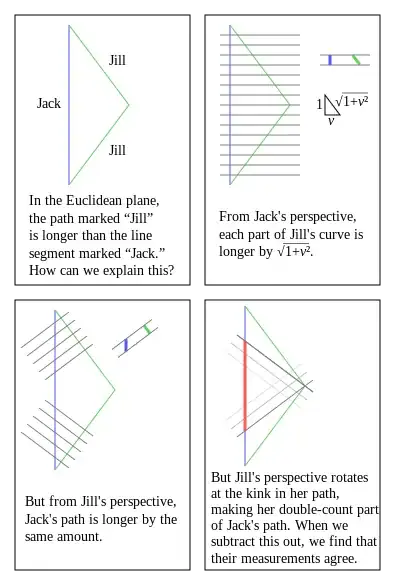Consider the two-way tachyonic antitelephone where the speed at which message is transmitted is $a$. A person $A$ sends a message to $B$ which is moving away with a speed of $v$ with respect to $A$. And when $B$ receives a message $B$ transmits a message back to $A$. Since, both of them have the same device, in each of the persons frame the speed of transmission is $a$. Now, when $B$ is at a distance $L$ away from $A$ with respect to $A$, $A$ sends a message which takes a time $$t_1 = \frac{L}{a}$$ to reach $B$, at the same moment $B$ sends a message to $A$ with a speed $a$ relative to itself towards $A$, due to which the time taken by the message to reach $A$ in $A$'s frame will be $$t_2 = \frac{L(1-av)}{a-v} \equiv \frac{L}{a'}$$ where we have used the fact that now the speed of the transmission from $B$ towards $A$ relative to $A$ is $$a' = \frac{a-v}{1-av}$$ Hence, the total time measured by $A$ from sending the message to $B$ and getting a response is $$T=t_1+t_2=\left(\frac{1}{a}+\frac{1-a v}{a-v}\right) L$$
Now, the argument is that one can choose $a$ such that $T < 0$ and, hence, $A$ will receive a message from $B$ before he even sends one to $B$. However, if you choose $a$ such that $T < 0$ we see that it will $a' < 0$ which means that the reply from $B$ is actually going away from $A$, so $A$ will never receive a message from $B$. So I do not see where the paradox actually is?
